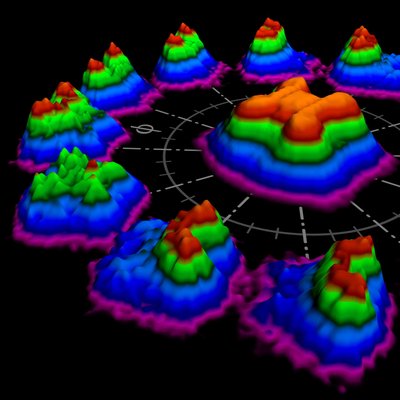More understanding of matter-light interactions
Double ionisation events can now be observed in the time scale of attoseconds (one billionth of a billionth of a second). Physicists have also shown that these ionisation events occur earlier than thought - a key factor to improving knowledge of correlated electron dynamics, which involve two electrons and their interactions with each other. The work appears in a recent issue of Nature Communications.

“The research involves studying if these correlated electrons, ejected from an atom or a molecule, are travelling in the same or opposite directions,” said Nora Johnson, a doctoral student in physics from Dell Rapids, S.D. “We can also determine if one electron has all the energy or if they share energy equally.”
Other university researchers involved include Itzik Ben-Itzhak, university distinguished professor of physics, and Matthias Kling, assistant professor of physics. Kling is the principal investigator for the project and is on research leave at the Max Planck Institute of Quantum Optics in Garching, Germany, where he is performing related research. All of the researchers are involved with Kansas State University’s James R Macdonald Laboratory.
Double ionisation occurs when two electrons are removed from an atom - a process that can be caused by an intense laser pulse. When double ionisation occurs in the laser field it can take the form of a sequential process, in which the laser removes one electron and then removes the other electron. This project focuses on another mechanism - the nonsequential process for ionisation - in which the laser removes one electron, which is accelerated and hits a second electron to excite it. The laser then knocks out the second electron from the atom.
The researchers sent a four femtosecond-long laser pulse onto argon atoms. While most of the argon atoms were singly ionised, approximately every thousandth atom underwent non-sequential double ionisation.
“The surprising result is that everybody expected that the second electron becomes excited and then, when the laser field is the strongest, this electron is removed,” said Ben-Itzhak, director of the Macdonald laboratory. “But it actually happens earlier.”
The researchers discovered that the time between the recollision and the second ionisation is about 400 attoseconds. This is about 200 attoseconds earlier than the peak of the field, which is when physicists expected the second ionisation to occur.
MRI scanner to advance medical breakthroughs at Monash
Siemens Healthineers' MAGNETOM Cima.X 3T is claimed to be Victoria's most advanced,...
Virtual pathology streamlines rapid onsite evaluation
Technology from Grundium, a specialist in digital imaging for pathology, has been shown to match...
Cannabis detected in breath from edibles
Researchers say they have made the first measurement of THC in breath from edible cannabis, in a...



